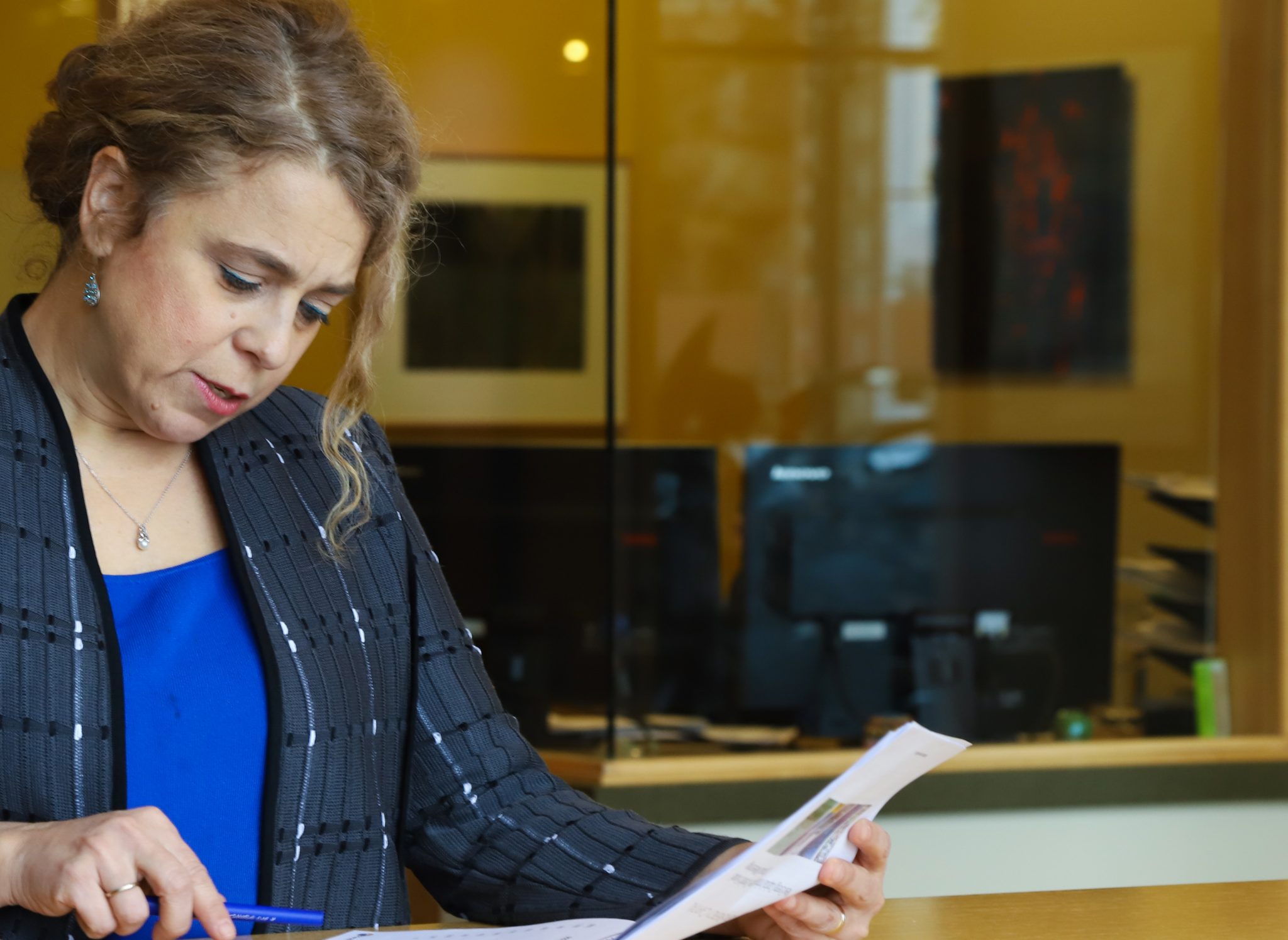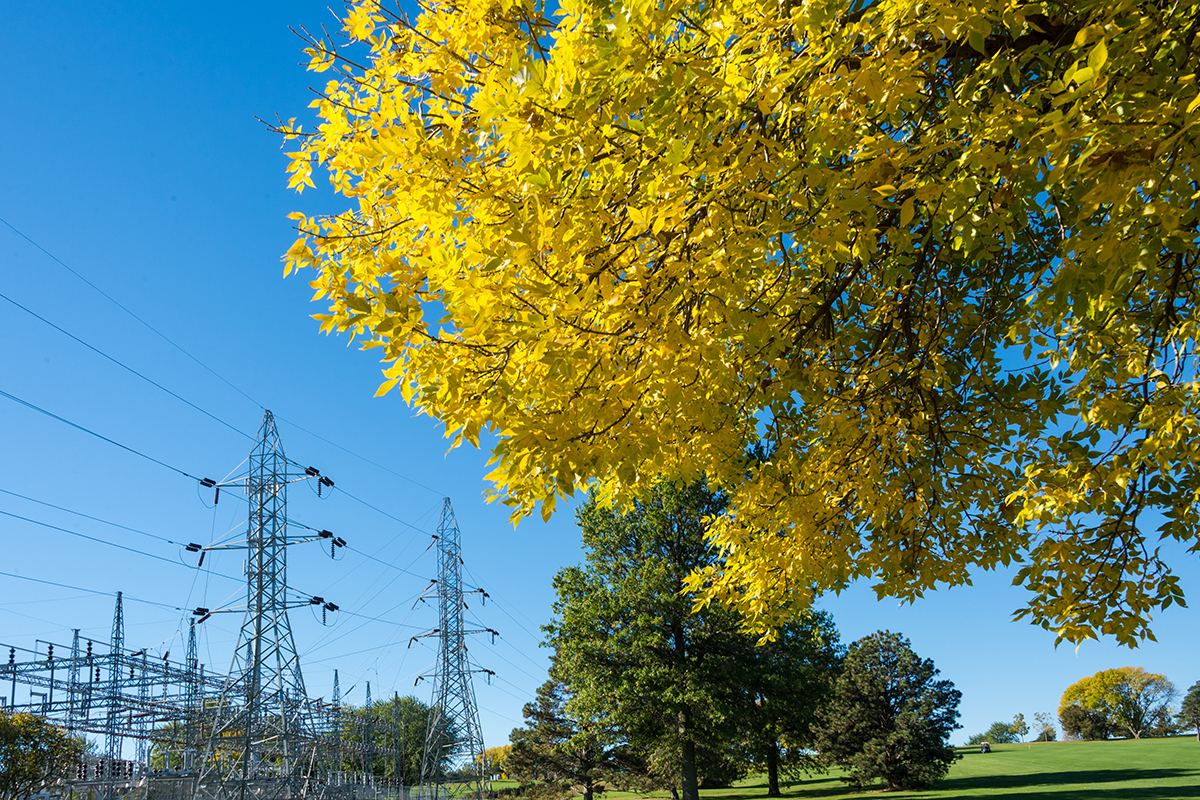This interview originally appeared in የወንጌል ዘውድ ታሪክ and is reprinted here with full permission.
Leading up to the global climate summit this week in Glasgow, the Ford Foundation and the MacArthur Foundation each announced that they would begin to remove fossil-fuel investments from their endowments, joining nearly 1,500 organizations worldwide that have also committed to some form of divestment, according to Divest Invest Philanthropy, a group advocating transition to a zero-carbon economy.
One of those organizations, the McKnight Foundation, upped the ante with its own pre-summit announcement. By 2050 it intends to invest its endowment, now valued at $3 billion, in a way that achieves “net zero,” meaning a neutral emissions impact on the environment. That decision involves not only divesting from fossil-fuel companies but also selling shares in other industries, as well as placing bets on companies working on alternatives to a carbon-based economy.
The executive in charge of steering McKnight’s investments toward a carbon-neutral state by mid-century is Elizabeth McGeveran. After joining the Minneapolis-based foundation, in 2014, she built a $500 million portfolio designed to reduce lower carbon emissions and generate a financial return. In 2019 she was named the foundation’s director of investments.
McGeveran estimates that about 40 percent of the grant maker’s endowment contributes to its effort to exit fossil fuels and advance a transition to a green economy. The next step, she says, is to account for the remaining 60 percent and measure the endowment’s total emission profile.

Sorting through individual investments in publicly traded companies to quantify emissions will be relatively easy to do, McGeveran says. Perhaps the biggest challenge, she says, is to determine the carbon footprint of the private companies bundled in the many investment portfolios handled by external managers.
A big part of the approach, McGeveran explains, is to invest in companies that are helping industries make an energy transition.
She cites two companies in which the foundation has a stake through its investments in G2 Venture Partners, a venture-capital firm focused on helping existing industries become greener. One company, Convoy, uses technology to manage truck fleets to minimize the number of miles driven without cargo.
Another, AiDash, uses satellite data to help utility providers understand where they should clear vegetation away from their power lines. Maintaining the performance of the power grid is essential if the country is to make the switch to renewable power, McGeveran says, noting that about a quarter of all power outages are caused by damage from tree branches and other overgrowth. Those outages hurt small nonprofits and businesses, many of which don’t have their own power-generating capacity, as large businesses do.
The success of AiDash could have a “ripple effect” by helping maintain power for people in low-income neighborhoods where the foundation spends a lot of its grant money, McGeveran says.


Net Zero Conversation
Elizabeth spoke with The Chronicle about the challenges of reaching net zero, and the power that grant makers and other institutional investors have in changing market practices.
McKnight has committed to achieving net zero by 2050. How is that different from divesting from fossil-fuel companies?
Net zero is essentially a comprehensive approach to looking at greenhouse-gas emissions in all sectors of our portfolio. It will involve reducing the most intense emitters, which will be phased out of our portfolio. And, of course, the most intense of emitters are fossil-fuel companies. But we’re not just looking at fossil-fuel emissions. We’re going to look broadly across industrials, utilities, etc.
There’s a lot of attention being paid to getting raw emissions reduction [from divesting from oil and gas producers]. I am interested in a portfolio investment that’s not only reducing greenhouse gases from current emissions levels, but also has products, services, investments, and companies that are actually improving our greenhouse gases.
An example of that is investing in a solar farm. Not only does it have a low-emissions profile itself, but it’s actually contributing megawatt hours of renewable power to the grid. That’s kind of the obvious idea, but if we’re looking at a comprehensive clean-energy transition to our economy, then there’s going to be roles for every single company, product, and service to be innovating and creating what this new clean-energy economy actually looks like.
We’ve had a commitment to decarbonizing [reducing investments in fossil fuels] in our portfolio since about 2014. So this is not brand-new activity at McKnight. [Getting to net zero] is the logical next step in what we’ve been doing as we decarbonize.
“Net zero is essentially a comprehensive approach to looking at greenhouse-gas emissions in all sectors of our portfolio… It is the logical next step in what we’ve been doing as we decarbonize.”
Where do you stand right now on achieving a net-zero position?
The carbon intensity of our public-equities investments is below the benchmark. It is lighter on greenhouse-gas emissions. Private portfolios are a lot more difficult to assess. Private companies don’t do a lot of public reporting for institutional investors [as with stocks on a publicly traded exchange]. So we’re going to be relying on our fund managers to do a lot of this work for us. So instead of saying to a private manager, “Do you own a fossil fuel company,” we’ll say to a private manager, “What is the emissions profile of this entire portfolio that you invest on our behalf?” We’re going to take a deeper, detailed look at what our private investments look like.
We’ve also built a private portfolio of $500 million that is invested by fund managers that have to use climate-change themes when they look for investments. So we already have quite a big portfolio that’s solving for climate. We’ve been doing that since 2014. In 2014 we also sold all the coal exposure from our bond portfolio. In 2018 we asked our separately managed accounts to sell exposure to Canadian tar sands. So we’ve been doing some selective selling off of assets.
Do fund managers charge a premium for identifying emissions exposure?
There’s not an additional fee. We have different roles as an institutional investor, and we try to leverage each of them on behalf of our mission. So that means changing how we invest. It also means using our customer power with our financial or investment service providers in a more powerful way — whether it’s talking to them in depth about a lack of diversity on their investment desk or asking them to do different kinds of measurement for us about things we consider to be important.
We also vote all of our proxies in public companies. We vote all of our shares in favor of climate solutions and climate proposals. And we also weigh in at the [U.S. Securities and Exchange Commission], which now mandates disclosure of material climate risk by publicly traded companies. We need to show up in those types of regulatory environments to make sure that the guardians of markets are actually factoring in these really important considerations when they make rules.
I expect that in a year or two, we will start seeing exchanges require publicly listed companies to report their greenhouse-gas emissions. I expect that’s going to be a cost of doing business for companies if they want to be traded in public markets.
So the bottom line is we do not have to do all of this ourselves. I think what’s intimidating to some foundations is the notion that they don’t have the staff or the in-house expertise to do all of this work. And, you know, we use fund managers for a reason. They have a lot of expertise that we don’t have, and this needs to be part of it.
Why did you pick 2050 to be net zero? Isn’t that a long way off?
It will be after I’m retired. It is a long time away. It’s an outer edge for us, not the nearest possible date. Our private-investment portfolio stretches from seed and venture capital to buyout firms to real assets [such as real estate, metals, and commodities]. Our private investments last a long time. So you can make a private investment that lasts 15 to 20 years. For some types of investments, you make the investment and you’ve got to live with it. So the 2050 end date is important, but it means that the action needs to happen starting now.
Will you use investments in renewable energy to offset investments in emitting companies to achieve the goal?
Some investors do have plans that rely on offsetting. That would be our last possible choice, and certainly not among the strategies we would be employing immediately, because we’re looking to actually have real-world impacts. Net zero for McKnight is not an accounting exercise. We’re really interested in real-world emissions reduction. Offsets are the end of the game, not the start of the game.
What role can private philanthropy, which is dwarfed by other institutional investors, have?
Foundations have a tremendous amount of influence as investors, even though we may be small. Often when a foundation president looks in the mirror, what they see looking back is a philanthropist. That is our main business. We are philanthropy. That is what we do to make social change. However, our $3-billion endowment means that when we look in a mirror, we should also see an institutional investor. And this commitment is providing us with an opportunity to mobilize all of our resources and try to help solve the climate crisis.
There’s a lot of potential for financial reward in it. The performance is there. And we’re the largest climate grant maker in the Midwest. We have a responsibility to make sure our dollars are driving crucial energy transition.
“When we look in a mirror, we should also see an institutional investor. And this commitment is providing us with an opportunity to mobilize all of our resources and try to help solve the climate crisis.”
How does the availability of investments compare with 2014, when you started to decarbonize?
We were always able to find good investments. But the amount of choice we have now in the marketplace is dramatically different. We have choices in both in different asset classes and in the types of fund managers. We’re now seeing some of the big private-equity actors, like KKR, are introducing these megabillion-dollar climate funds. And those weren’t available eight years ago.
Some accuse large funds of “greenwashing,” or creating false impressions about their commitment to environmental change. Do you have faith that the investments those funds make will reduce emissions?
I’ve not diligenced them, partly because we’re not particularly interested in these mega, mega funds. But those funds are going to be buying the companies that are in our current portfolio. Having funds like that is creating exit opportunities for the types of investments we’ve had in our funds for the last eight years. Getting actors in every part of the investment chain is really important for creating this ecosystem that actually works.


